
CHAPTER ONE
Considering the Exigency of Transfer
and Its Impact on Writing Center Work
TRANSFER OF LEARNING IN THE WRITING CENTER
Marcus Meade
University of Virginia

As I talk to writers and tutors inside my center about the conventions, norms, and values of an expansive list of genres within the academy and how to support learning that transfers between them, I find it useful to remind myself that contemporary conceptions of the difference between contexts, disciplines, and genres are relatively new. I am occasionally guilty, like many I suspect, of assuming the conditions of my lifetime have been the conditions of all lifetimes and will continue to be forevermore. This assumption is foolish, of course, and as I spend so much time on a campus covered in statues of Thomas Jefferson and George Washington, it should really stick with me that in the time of Jefferson and Washington things were different. In their time, literate people were considered more broadly literate, capable of taking their writing knowledge and skills across various contexts. In their time, the notion of a journalist and a doctor writing in different genres would have seemed odd, exemplified by the centuries-long definition of literacy as simply the ability to read and write rather than the ability to utilize the discourse of particular contexts.
Since the time of Washington and Jefferson, our conception of genres has changed, and new genres have emerged to meet new demands. Genres, both inside and outside higher education, emerge as part of shared exigencies (Devitt). Essentially, people within the same context share rhetorical needs that are momentarily stable, though frequently changing, and a genre is created. As David Russell makes clear in Writing in the Academic Disciplines, the process of modernization in America created more and more specialized writing contexts and, as a result, more genres. Some genres died out, but many more were created, genres like the memo, the scholarship essay, the instruction manual, and many, many more. The increased awareness and emergence of specialized contexts and the need to transfer between them, what writing center administrators and staffs see daily inside their centers, are the product of a centuries-long process of modernization, encapsulating the history of nearly all (if not all) American universities. The story of writing's history within educational settings is, in many ways, the story of education's attempt to respond to the writing demands of an increasingly modern society, as Russell explains.
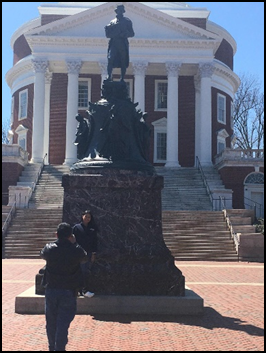 |
| Figure 1. Statue of Thomas Jefferson on the University of Virginia campus photos by Marcus Meade. |
Writing Centers entered this narrative midstream, as even the earliest writing center models didn't exist until the early 20th century (Carino; Boquet, "Our Little Secret"; Lerner, The Idea of a Writing Laboratory), at least 150 years after the founding of early American universities and a few decades after the expansion of higher education institutions in the 19th century (Thelin 40). As centers became more prevalent within universities in the 1970s and 80s, they positioned themselves and their work as an alternative to previously established conceptions of writing pedagogy and learning contexts. Where traditional writing classes would be transactional, centers would be collaborative. Where professors were "authorities," tutors would be peers. Where the university became more and more specialized, centers would work with writers in various disciplines, mediums, and genres. An examination of the history of writing center theory and practice demonstrates the ways in which its major threads functionally subvert the forces that raise barriers to transfer within universities. Centers are, in many ways, a response to the forces that created transfer as an issue and continually make transfer difficult within universities. While it is important to consider how centers can better support transfer, it is equally important to understand how they have already done so. Through an ontological look at writing centers and transfer, scholars can gain additional perspective on contemporary discussions of supporting transfer in the writing center and keep the exigency of transfer in mind as they consider how their centers will attempt to facilitate writing-related transfer and disrupt the conditions of modern universities that inhibit it.
 |
| Figure 2. Statue of George Washington on the University of Virginia campus photos by Marcus Meade. |
The Exigency of Transfer
American universities, as they exist today, are primarily products of the 19th century. They existed before then—before the United States was even a country—but their massive expansion and the establishment of their identity occurred mostly during the nation's first full century (Thelin). Between 1800 and 1860, the number of degree-granting institutions in the U.S. expanded from 25 to 241 (41). Tied up in this expansion were many of the forces steering American higher education today, especially the economic imperative of students. At the time, colleges and universities were attractive options for sons of middle-class families who were not in line to inherit land (52-53). As part of the establishment and reform of many universities, commentators, and eventually prominent administrators, called for greater pragmatism in higher education that included more specialization to meet the demands of an increasingly specialized and industrialized economy (Eliot; Spencer). Universities fought to maintain a grip on some of their classical traditions, such as the devotion to liberal arts education, as they still do, but they came of age in modern times to meet demands created by modernity, including the demand for increased specialization of reading and writing. Russell notes that a prominent theme of modern institutions is the division by which they were and still are constructed: "[T]he reorganized university drew students from a far-wider segment of society, then taught and credentialed them to enter a far-wider array of professions. The overriding curricular principle became division, not unity; accretion, not synthesis" (47). Writing-related transfer, then, is a modern issue in that it is a product of modernization. The division, serving as a vehicle for modernization, created unique writing contexts with boundaries that separated what would have once been whole, so that the notion of a broadly literate person yielded to theories of multiple literacies. One example of this division is the proliferation of technical and professional writing programs and courses.
| Figure 3. YouTube video entitled "Zygmunt Bauman: Liquid Modernity revisited." |
 The expansion of American universities in the 19th century places the genesis of the university movement in a period of modernity primarily defined by the influences of capitalism and industrialization (Giddens and Pierson 95). Sociologist Zygmunt Bauman argues that modernity is best characterized by secularization and the "liquification" of traditional loci of society and human identity. In his view, pre-modern conceptions of the social order as a complex mix of moral, ethical, political, cultural, and interpersonal considerations fractured, giving way to a "a new order, defined primarily in economic terms" (Bauman 4). Basically, the notion that society was ordered so the economy was a subset of a larger social order melted away, and "economy" became the defining characteristic. The work of sociologists like Anthony Giddens and Bauman reflects three essential logics of modernity: rationality, efficiency, and productivity. I use the term "logics" here and frequently throughout this chapter to emphasize that these are the driving forces—the underlying schema—on which decisions are made within modern institutions like contemporary education. They drive decision-making in a social sense but also often in an individual sense, as the social and individual are so inherently connected. These logics are not the only components of modernity, as Giddens' own definition gives voice to other essential elements of modernity, such as a social sense of agency and a new political order—notions of individual liberty and democratic representation, respectively. But even within the modern world's efforts to transform itself, rationality, efficiency, and productivity became the defining logics, and the implementation of these logics led to division as a key vehicle of modernization. Through the process of modernization, institutions became more rational, efficient, and productive, as they increasingly divided into segments or specializations. This segmentation is reflected in virtually all aspects of society: from medicine (specialized doctors) to schools (specialized disciplines) to commerce (specialized investment bankers).
The expansion of American universities in the 19th century places the genesis of the university movement in a period of modernity primarily defined by the influences of capitalism and industrialization (Giddens and Pierson 95). Sociologist Zygmunt Bauman argues that modernity is best characterized by secularization and the "liquification" of traditional loci of society and human identity. In his view, pre-modern conceptions of the social order as a complex mix of moral, ethical, political, cultural, and interpersonal considerations fractured, giving way to a "a new order, defined primarily in economic terms" (Bauman 4). Basically, the notion that society was ordered so the economy was a subset of a larger social order melted away, and "economy" became the defining characteristic. The work of sociologists like Anthony Giddens and Bauman reflects three essential logics of modernity: rationality, efficiency, and productivity. I use the term "logics" here and frequently throughout this chapter to emphasize that these are the driving forces—the underlying schema—on which decisions are made within modern institutions like contemporary education. They drive decision-making in a social sense but also often in an individual sense, as the social and individual are so inherently connected. These logics are not the only components of modernity, as Giddens' own definition gives voice to other essential elements of modernity, such as a social sense of agency and a new political order—notions of individual liberty and democratic representation, respectively. But even within the modern world's efforts to transform itself, rationality, efficiency, and productivity became the defining logics, and the implementation of these logics led to division as a key vehicle of modernization. Through the process of modernization, institutions became more rational, efficient, and productive, as they increasingly divided into segments or specializations. This segmentation is reflected in virtually all aspects of society: from medicine (specialized doctors) to schools (specialized disciplines) to commerce (specialized investment bankers).
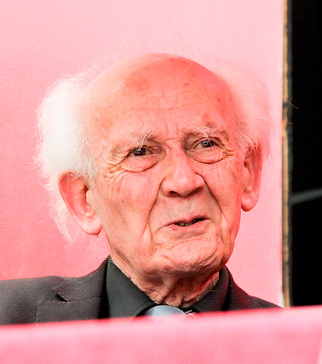 |
| Figure 4. Zygmunt Bauman via Flickr user Città Di Modena. |
These three logics are the base assumptions of modern universities; their righteousness is often unquestioned, and they work as the guiding principles of institutions. The logics of modern institutions assume that if something can be more rational, efficient, or productive, it should be. And institutions assume this because rationality, efficiency, and productivity have obvious benefits for the production and dissemination of knowledge. But those benefits are modern in nature, i.e., greater rationality makes it easier for students to understand something, which ultimately makes learning more efficient and productive. Within a modern paradigm, these are good things, but they don't make writing-related transfer any easier. The measures of rationality, efficiency, and productivity are also established as modern scales, so rationality becomes that which is rational from a modern perspective. Efficiency becomes that which is efficient by modern standards. And productivity becomes that which is productive for modern purposes. These logics operate together to great benefit within modern societies. As a result, the manifestation of each is prominent within universities. From this perspective, the history of higher education is, in large part, the history of its striving for increased rationality, efficiency, and productivity.
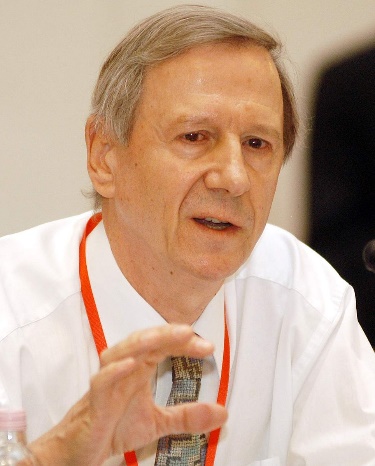 |
| Figure 5. Anthony Giddens via Wikimedia Commons user Szusi. |
Transfer studies implicitly take up rationality, efficiency, and productivity because these are the logics that created and continue to create more highly specialized contexts within and outside universities. Transfer is contingent on how people see various contexts (Nowacek). If they see useful similarities between contexts, they will transfer; if they don't, they won't (or they won't in successful ways). When transfer scholars talk about "boundaries" (Reiff and Bawarshi) or "thresholds" (Adler-Kassner and Wardle) that must be crossed or made malleable, they are talking about modern conceptions of rationality, efficiency, and productivity shaping the seeing of university faculty, administration, and students alike. When a history student sits down with a writing tutor and says "I'm in this English class, and I need your help. I've never written anything like this before," that student sees a boundary between those contexts. They recognize the differences immediately, but how they see these contexts has not been shaped in ways that notice similarity as acutely. On the flip side, the student is certainly transferring knowledge, skills, dispositions, and habits of mind without even realizing it as part of what David Perkins and Gavriel Salomon call "low transfer" (6455). These contexts are not "inherently" or wholly different, though they may appear so to students with little or no experience understanding novel writing contexts. Although modernity creates specialized contexts, it also trains us to see them as distinct and encourages students to find the most efficient, productive ways to move between writing contexts. Of course, it would be more effective (and in the long run, more efficient and productive) for students to understand how to successfully transfer between writing contexts. But modern institutions too rarely commit to what is necessary for long-run effectiveness, settling instead for short-term representations of proficiency like grades. Modernity's conception of efficiency settles for quick, quantifiable wins, rather than long, slow, holistic progress.
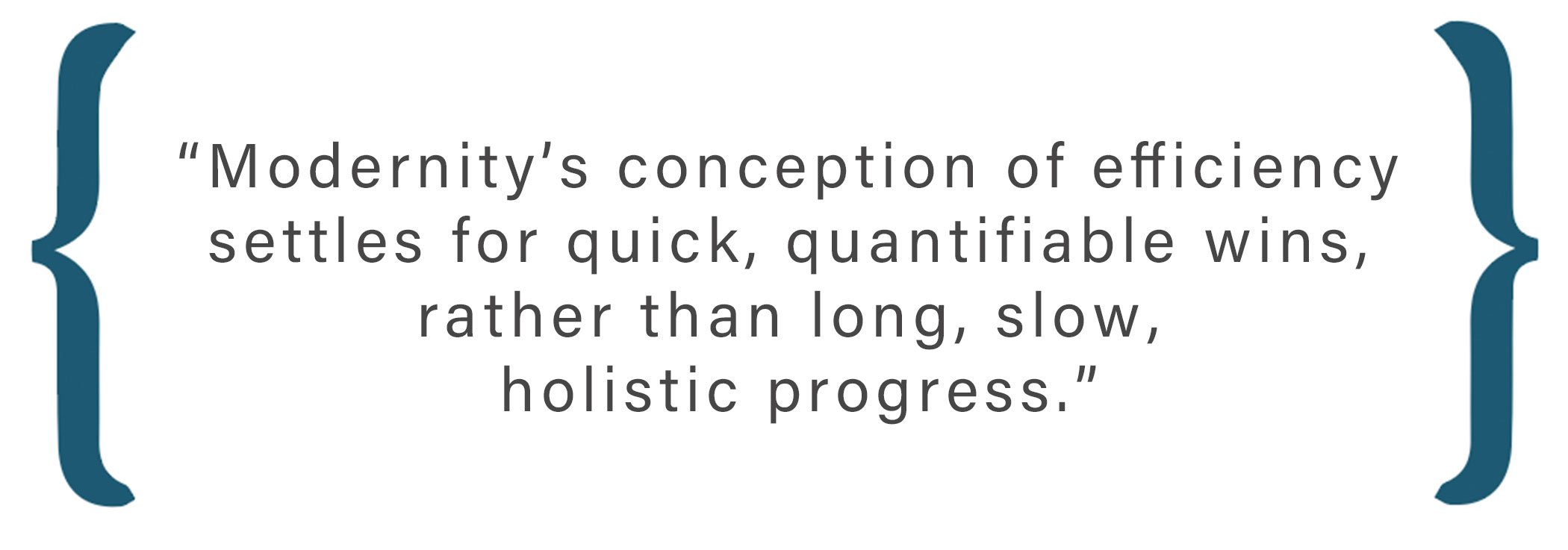 University writing center administrators constantly experience the modern logics pervasive within universities. Administrators must justify the cost-effectiveness of their centers with high usage rates, support for international students who pay higher tuition rates, and evidence of assistance with student retention and graduation. Results are meant to be quantifiable and easily representable (Lerner, "Writing Center Assessment" 59), the hallmarks of modernity. From a pedagogical perspective, writing centers are often asked to support increased specialization by providing discipline-specific support, such as satellite locations for specific disciplines or discipline-specific tutors. Taken as a whole, these pressures represent the logics of modernity working toward a more efficient, productive, and rational university, with specialization playing a key role. It's unrealistic to expect the writing center to upend or undo the process of modernization, and it's fairly clear that modernity has provided many benefits to the production of knowledge and the education of students. Still, in order to support writing-related transfer in the writing center, scholars, administrators, and tutors must reckon with the forces that inhibit positive transfer within and outside of the university.
University writing center administrators constantly experience the modern logics pervasive within universities. Administrators must justify the cost-effectiveness of their centers with high usage rates, support for international students who pay higher tuition rates, and evidence of assistance with student retention and graduation. Results are meant to be quantifiable and easily representable (Lerner, "Writing Center Assessment" 59), the hallmarks of modernity. From a pedagogical perspective, writing centers are often asked to support increased specialization by providing discipline-specific support, such as satellite locations for specific disciplines or discipline-specific tutors. Taken as a whole, these pressures represent the logics of modernity working toward a more efficient, productive, and rational university, with specialization playing a key role. It's unrealistic to expect the writing center to upend or undo the process of modernization, and it's fairly clear that modernity has provided many benefits to the production of knowledge and the education of students. Still, in order to support writing-related transfer in the writing center, scholars, administrators, and tutors must reckon with the forces that inhibit positive transfer within and outside of the university.
Writing Centers Respond
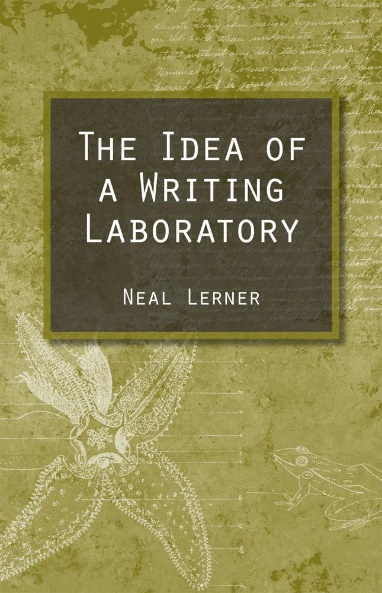 |
| Figure 6. Cover of The Idea of a Writing Center by Neal Lerner. |
Writing center history can be read as a response to many of the modern forces of higher education that created and continually solidify the boundaries between writing contexts and hinder writing-related transfer. As Neal Lerner points out in The Idea of a Writing Laboratory, centers have always been, at their essence, responses to the status quo: "Writing center work offers a reform of the usual way of doing business . . . the spirit of the writing center as an alternative place certainly lives on" (15). The ontology of the center, then, is characterized by its inclination to speak back to the features of the university that leave some students behind, keep students from meeting certain expectations, or keep students from reaching their full potential. The center, even from its earliest incarnations, was a response to the status quo and attempted to do things differently. Enterprising teachers of writing noticed how business as usual wasn't working and attempted to alter it, primarily with an approach—one-with-one instruction—that worked contrary to demands for efficiency in instruction (Carino; Boquet, "Our Little Secret"; Lerner, The Idea of a Writing Laboratory). The center's responsive ontology is a key element of its continued return to ideas and practices that work to undermine the logics of modernity and support writing-related transfer, ideas such as a commitment to one-with-one tutoring (despite its inefficiency), training tutors as generalists, collaboration, student-centered pedagogies, and a peer relationship between tutor and writer.
Research into the history of writing centers suggests anything that might resemble a center didn't emerge in American universities until 1904, at the earliest, and didn't gain steam until the 1930s (Carino). But it's worth pointing out that during the 1970s and early 80s, a period marking the origins of the contemporary idea of a center and the birth of writing center studies as a subfield (See first publication of WLN 1977 and WCJ 1980.), the development of the earliest identity of the contemporary writing center was once again a response. The most frequently cited and well-known piece of writing center scholarship that comes from this period is literally framed as a response. Stephen North's seminal writing center piece "The Idea of a Writing Center" reflects ideas of the time about what the writing center is and should be. In Elizabeth Boquet and Lerner's analysis of the response to "The Idea of a Writing Center," they note that it achieved "landmark status" quickly and is most often cited as a source in agreement with authors (176-77), signifying that it reflects prominent thinking of the time. But North, like many of his contemporaries, wasn't simply responding to misconceptions; he was also setting up the center as a response to more efficient, rational, and productive models of writing instruction. He makes it clear, as do scholars like Kenneth A. Bruffee, Andrea Lunsford, and Boquet (Noise) that the writing center model is and must be different from business as usual.
 Of course, what's truly important is how writing center theory and practice are different from business as usual, how writing center theory and practice work to subvert modern logics and to support writing-related transfer. It's easy to point out that the center operates differently, but in developing theories and practices that respond to the logics of modernity within institutions, writing centers support writing growth in vital ways, most especially in terms of writing-related transfer. Writing-related transfer hinges primarily on the writer's ability to see similarities between contexts (Smit 134; Nowacek 35). The pressures of modernity, though, do not invite students or faculty to shape their seeing in ways that facilitate successful transfer. In fact, they do the opposite, incentivizing specialization and creating cultures that solidify the boundaries between writing contexts. In her article "Creative Repurposing for Expansive Learning," Elizabeth Wardle bemoans the passing of legislation that reduces the amount of general education credits students are required to take, noting that "[state legislators'] perception seems to be that learning should be fast and focused." Wardle's example is just one of many large and subtle ways institutions of education encourage students to remain in their lanes, which hinders the development of transferability. Writing teachers may do all they can to facilitate writing-related transfer and help students see writing in multiple contexts, but their conditions are still highly influenced by the modern university with high class caps, dozens of frequently used genres within the university alone, extreme devotion to grades, and an emphasis on quantifiable results. What the writing center has done, at least as its ideals are often expressed, is to create conditions conducive to shaping the seeing of students, and it has done so by developing theories and practices that respond to the modern logics of universities.
Of course, what's truly important is how writing center theory and practice are different from business as usual, how writing center theory and practice work to subvert modern logics and to support writing-related transfer. It's easy to point out that the center operates differently, but in developing theories and practices that respond to the logics of modernity within institutions, writing centers support writing growth in vital ways, most especially in terms of writing-related transfer. Writing-related transfer hinges primarily on the writer's ability to see similarities between contexts (Smit 134; Nowacek 35). The pressures of modernity, though, do not invite students or faculty to shape their seeing in ways that facilitate successful transfer. In fact, they do the opposite, incentivizing specialization and creating cultures that solidify the boundaries between writing contexts. In her article "Creative Repurposing for Expansive Learning," Elizabeth Wardle bemoans the passing of legislation that reduces the amount of general education credits students are required to take, noting that "[state legislators'] perception seems to be that learning should be fast and focused." Wardle's example is just one of many large and subtle ways institutions of education encourage students to remain in their lanes, which hinders the development of transferability. Writing teachers may do all they can to facilitate writing-related transfer and help students see writing in multiple contexts, but their conditions are still highly influenced by the modern university with high class caps, dozens of frequently used genres within the university alone, extreme devotion to grades, and an emphasis on quantifiable results. What the writing center has done, at least as its ideals are often expressed, is to create conditions conducive to shaping the seeing of students, and it has done so by developing theories and practices that respond to the modern logics of universities.
Rationality
Start with rationality, which the university expresses most acutely through specialization. Russell explains that before the heavy influence of modernization, American university students didn't specialize. Everyone took the same courses, and teachers would teach multiple courses that today would be considered part of different disciplines (15). Eventually, specialization became the order of the day not only because it is useful for the efficient production of knowledge but also because it is rational. Aspects of knowledge that seemed to contradict each other in methodology or value, science and philosophy for instance, were cleaved into separate disciplines. As Wardle's example shows, the notion of becoming broadly educated has waned, as calls for more "practical education" increasingly hold sway, a movement begun by commentators and education leaders like Herbert Spencer and Charles W. Eliot. While rationality has benefits as a means of knowledge production and pursuit, a rational disposition toward writing and learning contexts ultimately stymies opportunities for positive transfer because the modern, rational mind sees that which does not fit rather than considers how something might fit. As a concrete example, consider the student attempting to transfer useful knowledge, skills, dispositions, and habits of mind from a first-year writing course into a physics course. This "rational" student may struggle to see these contexts as connected in part because the university—as well as cultural perceptions—sends signals they are not. Connecting the two requires the activation of imagination and nuance. Rationality struggles with imagination and nuance, which are vital tools for seeing in ways that support certain types of writing-related transfer (especially what Perkins and Salomon call "far" transfer, transfer between contexts that initially seem very different) (6453).
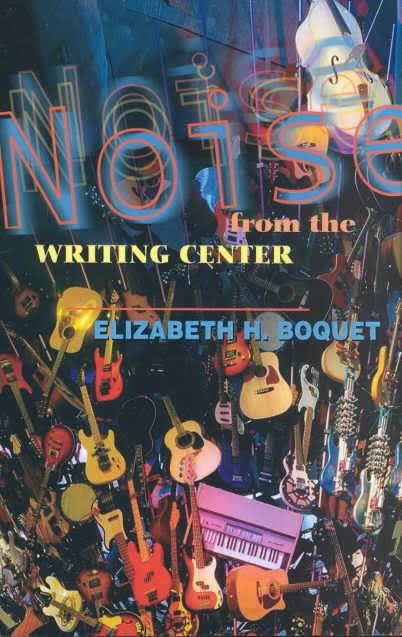 |
| Figure 7. Cover of Noise from the Writing Center by Elizabeth H. Boquet. |
In its essence, the center has troubled the rationality of universities in multiple ways. Starting with writing labs at the University of Iowa and the University of Minnesota in the 1930s, writing centers began removing themselves from the disciplinary structure by taking writing lab models out of the classroom and establishing separate facilities for "writing laboratories" (Carino 106). While centers continually consider their association with particular disciplines, most often English departments, many contemporary centers view themselves as university-wide hubs of writing support. Centers, open to students of all disciplines, levels, and types, are increasingly operating outside English departments or in multiple locations as more decentralized centers. Since the emergence of the contemporary center in the 1970s, many centers have emphasized their work with varied genres and forms. The pedagogy underlying so much of writing center work—student centered, collaborative, rhetorically focused—operates as if the boundaries between contexts are fluid and malleable, not necessarily inhibitive. In Noise from the Writing Center, Elizabeth Boquet encourages tutors to use moments that might at first seem inhibitive (such as bumping against a lack of discipline-specific knowledge)—moments she refers to with the metaphor of "feedback" (as in feedback from an amplified guitar)—as catalysts for collaborative learning (64-81). In true writing center fashion, Boquet is interested in troubling the rationality that might work its way into the center from the university at large by saying that we should view the thing that at first seems incongruous in ways that work for us.
Productivity
 Writing center studies has responded to the university's focus on productivity by distinguishing itself from an emphasis on productivity defined in modern terms. North's assertion that centers should focus on making "better writers, not better writing" (76) remains a central tenet of centers across the country, distinguishing the center's notion of "productivity" from that of the modern university. Though some have questioned that conception of productivity, arguing writing centers could and should focus on better writers and better writing (Corbett; Hawthorne), it is North's emphasis on student growth and de-emphasis of modern ends of production (like texts) that set writing centers apart. In a modern sense, productivity is that which can be represented as verifiable progress; a key aspect of modernity is the ability to represent what one has done in easily verifiable ways (Debord; Baudrillard). Consequently, representations of learning—texts and grades—hold outsized influence for students (Carpenter and Falbo 105). Since the process movement of the 1970s, writing center studies has broadly sought to de-emphasize the text and the connection between tutoring and grades, holding onto a central, if implicit, principle of one-with-one writing instruction, that suggests a text cannot represent the complexity of what it takes to compose it. Instead, the "productivity" of the center is more holistically defined by the growth of students (writers and tutors) who attend.
Writing center studies has responded to the university's focus on productivity by distinguishing itself from an emphasis on productivity defined in modern terms. North's assertion that centers should focus on making "better writers, not better writing" (76) remains a central tenet of centers across the country, distinguishing the center's notion of "productivity" from that of the modern university. Though some have questioned that conception of productivity, arguing writing centers could and should focus on better writers and better writing (Corbett; Hawthorne), it is North's emphasis on student growth and de-emphasis of modern ends of production (like texts) that set writing centers apart. In a modern sense, productivity is that which can be represented as verifiable progress; a key aspect of modernity is the ability to represent what one has done in easily verifiable ways (Debord; Baudrillard). Consequently, representations of learning—texts and grades—hold outsized influence for students (Carpenter and Falbo 105). Since the process movement of the 1970s, writing center studies has broadly sought to de-emphasize the text and the connection between tutoring and grades, holding onto a central, if implicit, principle of one-with-one writing instruction, that suggests a text cannot represent the complexity of what it takes to compose it. Instead, the "productivity" of the center is more holistically defined by the growth of students (writers and tutors) who attend.
Often, centers are forced to characterize their productivity in ways favored by the university (Learner, "Writing Center Assessment") while adopting a more holistic definition of productivity in staff meetings and casual conversations. In this sense, centers are both beholden to modern logics within the university and are operating to undermine them. As Daniel Mahala makes clear in his article "Writing Centers in the Managed University," centers are subject to many of the structures and ideals of the university while holding values and ideals of their own. This positioning can lead to situations where directors develop habits and processes to represent the work of the center one way to the university at large, especially university administrators, and another way to students and staff. The representation to the university at large signals adherence to the modern logics of the university by speaking its language with quantifiable results. The representation of the center's work given to students and staff often signals adherence to ideals like the rapport between tutors and students and individual growth over grades, ideals the universities at large may espouse to support but really aren't designed to consider.
Efficiency
Finally, and perhaps most acutely, writing center ontology represents a response to the efficiency models of learning that dominate modern higher education. Compared to the writing classroom, with a student-to-teacher ratio closer to 20:1, the one-with-one nature of writing tutoring appears wildly inefficient by modern standards. In his description of a failed early writing center model (the Dalton Plan), Lerner succinctly describes the efficiency issue meeting so many centers: "Perhaps the greatest blow to the Dalton Plan was the simple fact that individual instruction for all has always been just too darn time consuming and, ultimately, expensive" (The Idea of a Writing Laboratory 19). Stating that the center is not an efficient model of learning doesn't quite capture the complexity of measuring the center's value. Instead, it's more accurate to state the center appears to be an inefficient model of writing instruction, which, in modern contexts, is tantamount to stating it is an inefficient model of writing instruction. Boquet defines the writing center's response to the university's demand for efficiency in simple and powerful terms: "Efficiency is a bad model for the growth and development of the human mind" (Noise 52). Boquet's point reminds us that efficiency models, as they manifest in modern universities, leave out some of the most important aspects of learning in the name of increased efficiency. The one-with-one model employed by most writing centers provides the opportunity to pick up some of the learning left behind in the name of efficiency, including more humanistic traits (dispositions and habits of mind) and practices (like thoughtful reflection and imagination).
| Figure 8. Summary Diagram created by the author. |
A Renewed Approach to Transfer
Since 2012, a new approach to researching and teaching for transfer has emerged as part of the movement to consider the more humanistic elements impacting writing-related transfer than what had been considered in previous scholarship (Moore; Driscoll and Wells; Wardle).1 In many ways, this approach belies the modern pressures of institutions by insisting elements that are difficult to quantify and require more engagement to teach like dispositions and habits of mind play a vital role in writing-related transfer. A dispositional approach, acknowledging the importance of a writer's psychological approach to writing contexts, offers a promising future for understanding how centers have and should continue to support writing-related transfer. A dispositional approach, as outlined by Dana Lynn Driscoll and Jennifer Wells, and by Wardle, encourages writing teachers to unearth students' psychology in relation to certain writing contexts in order to understand and shape how they see writing contexts. Driscoll and Wells identify four dispositions important to writing-related transfer: value-expectancy, self-efficacy, attribution, and self-regulation. Wardle describes two broad dispositional categories: problem-exploring and answer-getting. Each of these conceptions of student dispositions provides insights that can help tutors develop practices that more explicitly support transfer.
Many writing center tutors and administrators do dispositional work as part of their practices already, though they may not name it as such, by connecting with writers and mining the different factors influencing a piece of writing, including the writer's dispositions and habits of mind toward a given writing context. New approaches to transfer studies that take up dispositions and habits of mind, such as using these habits for tutoring training created by the administrators at the Arizona State University writing centers (Cahill et al.), offer fresh insight into if and how these practices help shape the seeing of students in ways that support transfer. Practices like rapport building and rhetorical listening, as well as affective care that many tutors provide writers, may already support a dispositional model of tutoring for transfer in that they help students develop "problem-exploring" dispositions toward writing contexts or higher senses of self-efficacy. With a more explicit understanding of how current practices fit into a dispositional model, tutors and directors can develop a tutor education curriculum and methods to solidify tutoring practices supporting transfer.
Dispositional transfer research provides an excellent opportunity for future writing center research. Through interviews or questionnaires, writing center scholars could hear from students before and after they utilize the center to tackle new writing contexts. Scholars can ask questions related to the dispositions as they approach these tasks or have students participate in reflection activities and narrate them. Many different approaches could illuminate the processes related to students' dispositions as they meet new writing contexts.
The modern logics that erect and support boundaries between writing contexts within universities will not simply go away; they will continually pressure the center to become more efficient, rational, and productive. The center's determination to remain responsive to the modern ideal of the university has imbued it with great potential for supporting transfer. Hanging onto its ontology as a reaction to the status quo and maintaining a space resisting the pressures of modern institutions provide the center the environment it needs to make humanistic connections. This means resisting calls to operate on a smaller budget, to take on group sessions simply for the sake of working with more writers, to lean more heavily on online tutoring (especially asynchronous online tutoring), or to have tutors specialize without a foundation in one-with-one writing pedagogy. It means embracing pedagogical approaches that critique efficiency, like Boquet's high risk/high yield tutoring (Noise) and championing the type of engagement necessary for reflection, mindfulness, and imagination.
As a concrete example, I offer a recent experience within my own center at the University of Virginia. As part of a campus-wide initiative to support writing, the powers that be (a committee of tenure-track faculty from across campus, so no writing center administrators who are all non-tenure track were included) decided the writing center should institute a writing fellows program to help support writing in the disciplines—a potentially worthwhile idea with potentially harmful implications for supporting writing-related transfer. It was occasionally suggested that the center's administrators (myself included) look at hiring these fellows by reaching into disciplines not typically associated with the center (outside the Humanities, basically) because these students already had discipline-specific writing knowledge. And it was also suggested that these fellows be graduate students because their knowledge would be superior to that of undergraduates. Of course, our center already tries to recruit tutors from various disciplines, but it was the suggestion these students be graduate tutors within the disciplines that worried me. Our graduate students aren't required to take our 3-credit "Tutoring Peer Writers" course as preparation for tutoring (yet, anyway) so the suggestions for staffing this writing fellows program were premised on the notion that these potential discipline-specific graduate tutors would already know what they needed to know to tutor effectively. No training required. No slow process of helping them learn to talk about writing in generalizable ways. No in-class practice so they can find moments to get off the page and find concepts the writer can take away and utilize in the future. Just pluck them from the sciences and have them start helping students with lab reports.
Luckily, we didn't take that route. We decided to have existing tutors take on the role of writing fellows, tutors with training and experience, who could build a better understanding of various disciplines on top of existing knowledge of tutoring writing. And we continued in our tutoring course and yearly orientation to emphasize pedagogies like rhetorical-genre studies that give tutors the opportunity to help writers learn a process for meeting new contexts. If writing center administrators and tutors remember some of their key tenets and resist the pressures of modern institutions, they can show students that boundaries between contexts (disciplines?) can be manipulated, played with, and shaped in ways more varied than they may initially imagine.
NOTES
1 (back to text)
Moore's 2012 article uses activity theory as a taxonomy for organizing the history of transfer research, and a study of it shows that prior to 2011 nearly all writing-related transfer scholarship focused intently on mediational means (texts) and objectives (contexts) rather than the individual's psychology or relationship to the context. This may be the result of the heavy influence of genre studies on early writing-related transfer research.
Works Cited
Adler-Kassner, Linda, and Elizabeth Wardle, editors. Naming What We Know: Threshold Concepts of Writing Studies. Utah State UP, 2016.
Baudrillard, Jean. Simulacra and Simulation. Translated by Sheila Faria Glaser, U of Michigan P, 1994 (Original work published 1981).
Bauman, Zygmunt. Liquid Modernity. Polity Press, 2000.
Boquet, Elizabeth. "'Our Little Secret': A History of Writing Centers, Pre- to Post-Open Admissions." College Composition and Communication, vol. 50, no. 3, 1999, pp. 463-82.
---. Noise from the Writing Center. Utah State UP, 2002.
Boquet, Elizabeth H. and Neal Lerner. "After 'The Idea of a Writing Center'." College English, vol. 71, no. 2, 2008, 170-89.
Bruffee, Kenneth A. "Peer Tutoring and the 'Conversation of Mankind'." Landmark Essays: On Writing Centers, edited by Christina Murphy and Joe Law, Hermagoras Press, 1995, pp. 87-98.
Cahill, Lisa et al. "Developing and Implementing Core Principles for Tutor Education: Administrator Goals and Student Perspectives." How We Teach Writing Tutors: A WLN Digital Edited Collection, edited by Karen Gabrielle Johnson and Ted Roggenbuck. wac.colostate.edu/docs/wln/dec1/Cahilletal.html.
Carino, Peter. "Early Writing Centers: Toward a History." The Writing Center Journal, vol. 15, no. 2, 1995, pp. 103-15.
Carpenter, William, and Bianca Falbo. "Literacy, Identity, and the 'Successful' Student Writer." Identity Papers: Literacy and Power in Higher Education, edited by Bronwyn T. Williams. Utah State UP, 2006, pp. 92-108.
Corbett, Steven J. "Negotiating Pedagogical Authority: The Rhetoric of Writing Center Tutoring Styles and Methods." Rhetoric Review, vol. 21, no. 1, 2013, pp. 81-98.
Debord, Guy. Society of the Spectacle. Translated by F. Perlman, Black & Red, 1983 (Original work published in 1967).
Devitt, Amy J. Writing Genres. Southern Illinois UP, 2004.
Driscoll, Dana Lynn, and Jennifer Wells. "Beyond Knowledge and Skills: Writing Transfer and the Role of Dispositions." Composition Forum, vol. 26, 2012, compositionforum.com/issue/26/beyond-knowledge-skills.php.
Eliot, Charles. "The New Education." The Atlantic, February 1869, www.theatlantic.com/magazine/archive/1869/02/the-new-education/309049/.
Giddens, Anthony, and Christopher Pierson. Conversations with Anthony Giddens: Making Sense of Modernity. Stanford UP, 1998.
Hawthorne, Joan. "'We Don't Proofread Here': Re-visioning the Writing Center to Better Meet Student Needs." Writing Lab Newsletter, vol. 23, no. 8, 1999, pp. 1-7.
Lerner, Neal. The Idea of a Writing Laboratory. Southern Illinois UP, 2009.
---. "Writing Center Assessment: Searching for the 'Proof' of Our Effectiveness." The Center Will Hold: Critical Perspectives on Writing Center Scholarship, edited by Michael A. Pemberton and Joyce Kinkead, Utah State UP, 2003, pp. 58-73.
Lunsford, Andrea. "Collaboration, Control, and the Idea of a Writing Center." Landmark Essays: On Writing Centers, edited by Christina Murphy and Joe Law, Hermagoras Press, 1995, pp. 99-108.
Mahala, Daniel. "Writing Centers in the Managed University." The Writing Center Journal, vol. 27, no. 2, 2007, pp. 3-17.
Moore, Jesse. "Mapping the Questions: The State of Writing-Related Transfer Research." Composition Forum, vol. 26, 2012, compositionforum.com/issue/26/map questions-transfer-research.php.
North, Stephen M. "The Idea of a Writing Center." Landmark Essays: On Writing Centers, edited by Christina Murphy and Joe Law, Hermagoras P, 1995, pp. 71-86.
Nowacek, Rebecca S. Agents of Integration: Understanding Transfer as a Rhetorical Act. Southern Illinois UP, 2011.
Perkins, David N., and Gavriel Salomon. "Transfer of Learning." The International Encyclopedia of Education. 2nd ed., 1994. pp. 6452-57.
Reiff, Mary Jo, and Anis Bawarshi. "Tracing Discursive Resources: How Students Use Prior Genre Knowledge to Negotiate New Writing Contexts in First-Year Composition." Written Communication, vol. 28, no. 3, 2011, 312-37.
Russell, David. Writing in the Academic Disciplines, 1870-1990: A Curricular History. Southern Illinois UP, 1991.
Smit, David W. The End of Composition Studies. Southern Illinois UP, 2004.
Spencer, Herbert. What Knowledge is of Most Worth. Google Books. https://books.google.com/books?id=D_gcAAAAMAAJ&printsec=frontcover&source=gbs_ge_summary_r&cad=0#v=onepage&q&f=false. (Originally published in 1884).
Thelin, John R. A History of American Higher Education. 2nd ed., The Johns Hopkins UP, 2011.
Wardle, Elizabeth. "Creative Repurposing for Expansive Learning: Considering 'Problem exploring' and 'Answer-getting' Dispositions in Individuals and Fields." Composition Forum 26, 2012, compositionforum.com/issue/26/creative-repurposing.php.
ACKNOWLEDGEMENTS
I'd like to express an emphatic thank you to Bonnie Devet for helping me make sense of a project that at times confused and frustrated me. Her consistent encouragement and valuable feedback continually kept me from abandoning it. I'd also like to thank Dana Lynn Driscoll, Karen Johnson, and Ted Roggenbuck for their constructive and encouraging feedback, as well as the reviewers who provided feedback in the project's early stages.
BIO
Dr. Marcus Meade is the Assistant Director of the Writing Center at the University of Virginia. His research focuses primarily on composition pedagogy, writing center theory and praxis, and writing-related transfer, though he dabbles in research on literacy and economics and the rhetoric of sports violence. His scholarship has appeared in College Composition and Communication, Michigan Journal of Community Service Learning, and Contemporary Perspectives on Cognition and Writing.